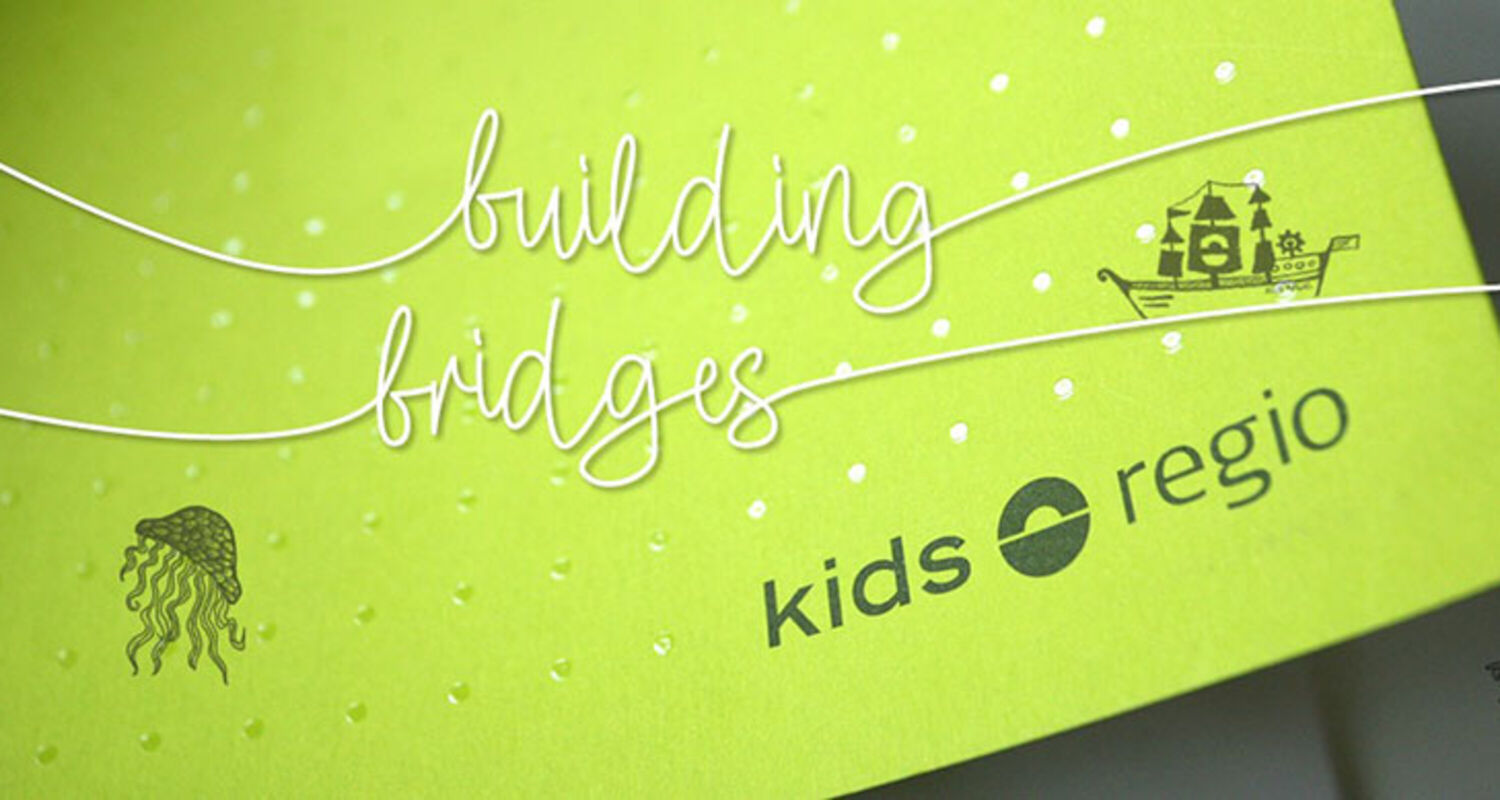What Do Young Audiences Want? Key Takeaways for Exhibitors from Kids Regio
Following the joined workshop held during the Annecy International Animation Festival in partnership with Europa Distribution on the circulation of Young Audience and Animation film between Exhibitors and Distributors, CICAE Partner Kids Regio held a follow up online session based on their latest report on how to facilitate the distribution, circulation and exhibition of Young Audience films.
Summary
Connecting with young audiences is the holy grail for many arthouse cinemas, but navigating the world of children’s cinema – with so much noise and conflicting advice – can be confusing.
The organisation KIDS Regio aims to address this issue, advocating for the production and distribution of high-quality children’s films across Europe. In a recent online session organised by CICAE and Europa Distribution, Project Manager Anne Shultka, presented key findings from a recent report commissioned by KIDS Regio. “Building Bridges – European Children’s Film in Focus” draws on interviews conducted with 374 children across 12 countries, to offer a sometimes surprising insight into how young people interact with cinema.
Here are some key takeaways for exhibitors:
Children’s cinema is not a single genre
Approaching “children’s film” as a single genre is unhelpful. Just like adult cinema, children’s cinema is diverse and multi-faceted, an umbrella term which encompasses many different sub-genres – action, adventure, comedy, fantasy even horror. The Building Bridges report suggests that while children may not directly name individual genres, they quickly learn to clearly identify with the emotional cues which shape those different conventions.
Interestingly, children seem to be most responsive to films which blend multiple genres, enjoying the surprise factor of a comedy with strong adventure elements, or a fantasy with a dash of horror. They also generally respond best to dynamic, multi-stranded and fast paced films, perhaps because many children are used to watching multiple screens at once.
Children today define film differently than previous generations
Our youngest generation are true digital natives and for them media literacy usually starts with shorter formats. Many young people engage with a constant stream of short form work on smartphones and tablets, which means that for them a film is simply a longer video. Screens serve as a gateway to a seemingly endless global entertainment landscape, within which film is just another form of entertainment, to be accessed alongside YouTube and TikTok.
It’s worth considering how these expanding definitions of film might feed into your programming for children within your venue. Is there space to screen shorter form content, e.g. shorts before features or bespoke shorts programmes, to reflect evolving tastes? Filmmaking workshops or a micro-short competition might tap into the creativity and independent content creation many children already engage with every day in their interactions online. Feature length work remains valuable, but there are many routes to the cinema.
Age is not just a number…
Engagement with film develops dramatically between the ages of 7-11, as children shift from just “watching something” to forming distinct tastes. Over these years, young people evolve from pretend play and fantasy games to more active engagement with questions of identity and independence. Thinking about “children” as one homogenous target group fails to reflect the very different ways in which those of different ages approach cinema.
Marketing and communication around children’s film works best when it reflects the nuances of different age groups and has a clear sense of who the film is most directly aimed at. Attempting to target a film at too wide an age range, can be off putting for young audiences (especially if they perceive a film to be targeted at younger children).
Young people are curious, and want to feel in charge of their choices
Many parents (and teachers) will tell you that many children like to resist “adult-approved” choices, eager instead to assert their independence. Many children interviewed stated that they are put off films when adults push them towards something specific. Older children are often already actively researching films they are interested in, using social media to source “reviews” (usually from peers in their age group rather than professional criticism) and will discuss potential choices with their friends.
It might be worth therefore considering if there are ways in which your programme can make children feel empowered and able to assert their own opinions. This could be offering a choice of titles at children’s film clubs, or mechanisms to allow children to vote for or feed back on the films that are screened.
Young audiences are drawn to stories about children, rather than for them
That rebellious streak is also reflected in the films which children seek out, which often centre on narratives about children rather than necessarily for them. Young people dislike feeling patronised, and are alert to films which feel childish or speak down to them. Instead, they are often drawn to character-led narratives centring children slightly older than themselves, with stories which reflect their own journeys of self-discovery.
When programming and marketing films, it’s important not to underestimate younger audiences – age suitability varies greatly child to child, and children often demonstrate more sophisticated tastes than we might expect.
Children discover film at home… but they fall in love with it at the cinema
It’s true that almost all children’s earliest encounters with film, and the bulk of their engagement with the medium, will occur in the home, on the family television screen or tablet. That doesn’t mean however, that they don’t value the cinema experience. Trips to a venue remain a valued communal experience for families, and children report enjoying the sense of ceremony which comes with a cinema visit – the big chair, the gigantic screen, the popcorn. As a result, even if there are sometimes long gaps between cinema trips, children often have strong memories of their last visit.
For exhibitors then, it’s worth considering how to lean into this sense of occasion. Are there ways to make children’s visits to the cinema even more memorable? Bespoke snacks, decorations and special events all feed into that perception of specialness. This recent feature about Sweden’s Kids Kino includes ideas about how to make venues more kid-friendly to get you started.
Our younger generation is more open to international film than ever before
While the KIDS Regio report identified some regional nuances, overall, it was striking how much overlap in taste was found between children in the 12 different countries surveyed. Age, rather than nationality or gender, was the strongest factor determining the films individual children were gravitating towards. In today’s ever more globalised media landscape, young people are increasingly open to films from different countries, and social media means that they are reading subtitles at an earlier age. Young audiences are increasingly curious and courageous with their viewing.
This finding clearly suggests that taking risks with programming can pay off, especially when it comes to screening more international children’s films, either dubbed in local languages (for younger viewers) or with subtitles. This opens up potentially rich new strands in terms of the variety and quality of films available to young people, especially in countries with smaller national film industries.
Finally, take young audiences seriously – and ask them what they want!
Perhaps the strongest takeaway from the Building Bridges report is that children, all across the Europe, have strong opinions and like to share them! Treating young audiences as people, with broad tastes and minds of their own is key to fostering meaningful connections and sustaining audiences.
It’s important therefore to take children seriously, and if possible, to consult them when you are making decisions which have an impact on them. This could be done anecdotally, or more formally through surveys, focus groups or even by starting a young people advisory council. If you can find ways to speak to the children who already come to your venue (and perhaps even those that don’t) then you might be surprised by what they tell you!
The Online Session is protected by password. It is available for professionals to watch it, contact quentin.bucher@cicae.org with your name, surname and cinema or institution.
23.07.2025

Rachel Pronger
Rachel Pronger is a writer, curator and editor based in Berlin. She began her career working for festivals and cinemas across the UK, including Tyneside Cinema, Edinburgh International Film Festival and Alchemy Film & Arts. She has served as a programme advisor for Sheffield DocFest, BFI London Film Festival, Alchemy Film & Arts and Aesthetica Short Film Festival. Her writing on film and visual art has been published by outlets including Sight and Sound, Documentary Magazine, The Guardian, MUBI Notebook, Art Monthly and BBC Culture, and she is the co-editor of online journal Cinema of Commoning. Rachel is also the co-founder of Invisible Women, an archive activist feminist film collective which champions historic work by women and marginalised gender filmmakers through curation, events and editorial. more from the author


